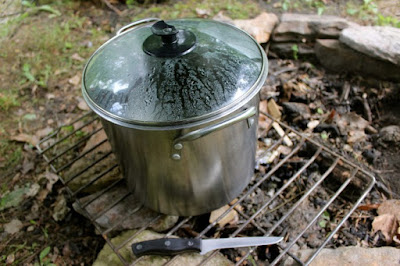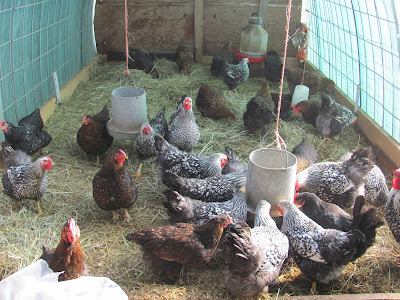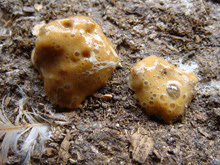A lot of articles has been
published about maize, how to plant maize, even to the end product of this
wonderful crop. You are not done yet until you get what you need, how will you
get the details on how to cultivate maize in this very article you are reading.
History:
It is believe that maize was first domesticated in the
Tehuacan Valley, Mexico. The Olmec and Mayans cultivated
maize in numerous varieties throughout Mesoamerica, cooked, ground or processed
through nixtamalization. Beginning about 2500 BC, the crop spread through
much of the Americas. The region developed a trade network
based on surplus and varieties of maize crop, maize are cultivate in every
corner globally.
Botanically, it is called Zea mays, it is commonly known as maize,
corn. Maize has different names depending on the location or geographical
location. There six different types of maize, they are: dent corn, flint corn,
pod corn, popcorn, flour corn and sweet corn. This article will focus more on
sweet corn.
Site preparation operation on cultivate maize
Clearing of the site:
The first thing to do in the process of
planting maize is the clearing of the site. This can be done using any means,
local farmer make use of local tools cutlasses in clearing the site. As a matter
of fact, there is a limit to what you can achieve with the use of local tools,
though they only produced for their family.
Aside this, machine can also be use in clearing the site, this method is
fast and expensive, therefore most of the farmer have no access to the
machines. Farmers that make use of machine produce in large quantities compare
to one that make use of local tools.
Parking of debris:
Another operation is removing debris from
cleared sites, this is very important as you cannot plant directly to the site
without removing the debris. Planting directly will definitely affect the growth
and as well the weeding process. Therefore it important to remove the debris
before planting, if you find it so difficult to removed the debris, then burn
it. You may gather the debris of put fire as they cleared the site.
Plough or mixing of the soil:
Now that you have cleared the site,
you are yet to complete the process before planting can be done. The next line
of action is mixing the soil, how will you do that, the method is simple,
mainly this is accompany with the help of machine called plough. This machine
is used to mix the soil to suite the production of planted maize. Mind you,
local farmer might not have access to the machines, yet they can go on planting
their maize.
Method of planting maize (cultivate maize)
Planting operation:
Planting can be done in two ways, either
through machine or manual. Number of maize grain in a hole varies between three
to five, these are the best numbers. Some people believe in two grains per
hole, to me this will have negative effects in the end production.
Manual method:
This method is adopted by the local farmers, it is
also apply where the farm to plant are not too big, it is time consuming
method, it is a tedious method and to me is the most effective method to adopt
in planting maize. Planter make sure they put at least three to four grains in
each holes and the depth of the holes is between 8 cm to 10 cm.
Mechanical method:
This method is adopted when you are to plant
hectares of land, the method is expensive and less time consuming method. Base
on the specification of the machines, this cannot be used by the local farmers.
With single planter you can cover a very large of land in few days, you have
you crops in rows and in straight lines.
Planting space:
You cannot just put the grains in holes, there is
certain space you must follow in planting that will give out a best result.
Mind you, the number of grains at time is not matter, the space between the
rows and along the line determines the levels and sizes of maize cub you will
achieve at the end. From my own experience in maize production, I will employ
you to follow 3ft x3ft along the lines and as well on the rows. Though you
might see some spaces but I can bet it with you, this produce more to the space of 2ft x 2ft along the line
and as well the roles.
Fertilizer applications on cultivate maize
There are two types of
fertilizers that are available in the market, either of them is good.
Applications now depend on you and which is available in the market at the time
of need. They are organic and inorganic fertilizers.
Organic fertilizer:
These are the waste product from animals like
poultry manure, cow dung and other animals. This is very good when apply at the
right time, it must be apply two times before the maize are ready for harvest.
Inorganic fertilizer:
Other than organic fertilizer, inorganic one
like 470kg of super phosphate, 200 kg of urea and 180 kg of potash per hectare should
be apply. 20 days after sowing should 50-60 kg of urea and at 40 days after
sowing 120 kg of urea and at 50 kg of potash as top dressing.
Weeding operation: on cultivate maize
Now that your maize are doing
well in the field, they are facing many challenges like completion with grass,
attack by animals and many more. In other for the maize to do well, the farm
must be free off weeds. In simple term, weeding is the process of removing
unwanted plants from the field, not only they are unwanted, but they compete
with the main crop in the farm.
Therefore it is important and mandatory to
remove them from the farm, so that competition will show up between the plant
and the weeds. Chemically, weeding is done two times before the maize are ready
for harvesting while that of manual weeding is up to three time before they are
fully matured. Weeding can be done in two ways, manually and chemically:
Manual weeding:
This is the process of removing unwanted plant from
the farm with the help of using simple tools like cutlasses and hoes. This
method is effective, but it is very tedious and consumed more time. This method
is mostly applicable where the farm to cleared are not too big, as well
requires more hands.
Chemical method (herbicide):
Thanks to our scientist, in the
process of making live easy and bearable for us, they developed chemicals that
can be used to remove weed from farms. Certain set of crops are provided with
certain chemicals that will not have negative impact on them when they are
apply on the farm for the process of removing weeds, they will only have
impacts on the weeds alone. Chemical method requires the chemical, water and
sprayer. In using the chemical, strictly follow the instruction from the
manufacture of the chemicals.
Application of insecticide:
another important operation is the
application of insecticide, this operation is done one or two time depending on
the condition of the farm. If the farm is attacked by insect, you need
insecticide to get rid of them, there it may require you of applying the chemical
two times. Meanwhile, if the farm is not attacked by the insects, only one
application is enough for protection to guide against them.
Harvesting
This is the final operation in
the farm before maize is ready for processing and consumption. How will you know that your maize is matured
and ready for harvesting? The silk will change from green to grown, husk leaves
will also changed from green to brown. If you notice the signs in your farm,
your maize are ready for harvesting and consumption. Harvesting can be done
manually and mechanically, either of the method is applicable and are
recommended.























